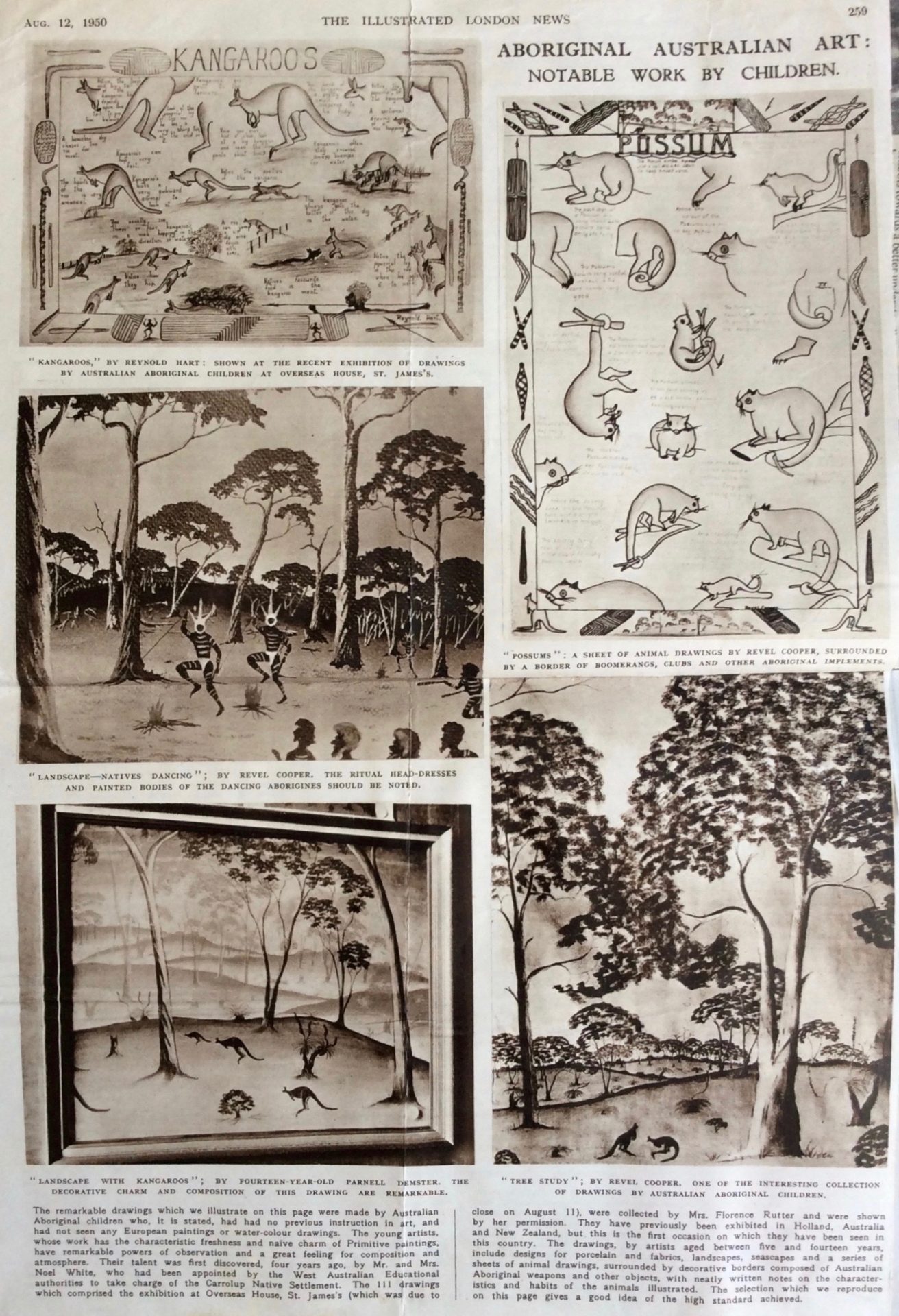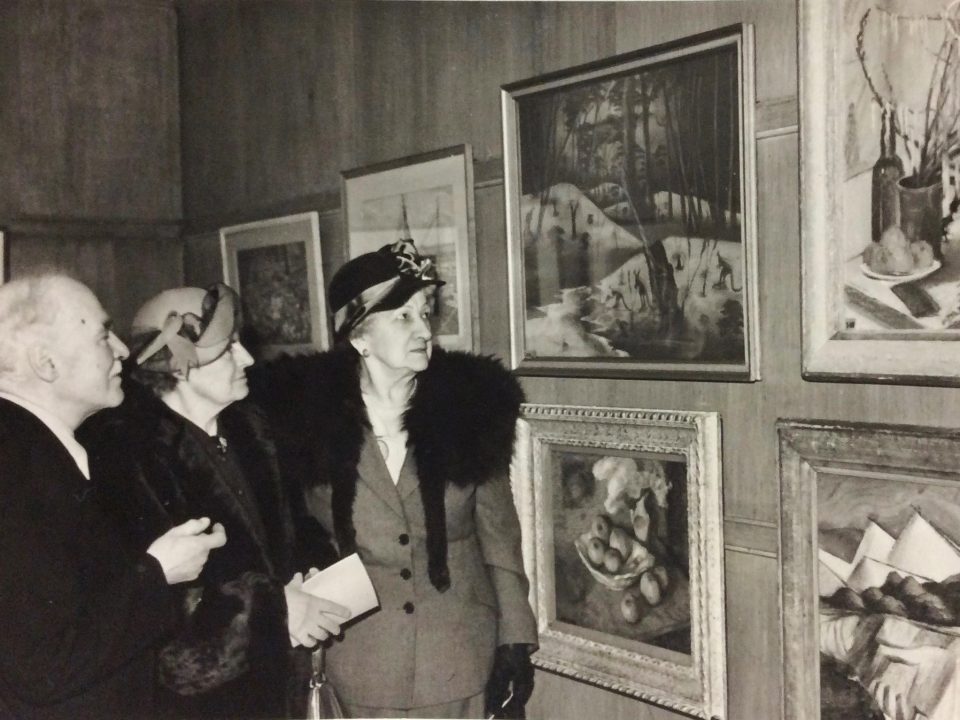Initially, Native Affairs Commissioner Mr S G Middleton writes enthusiastic letters to Mrs Rutter. She organises an exhibition in Appeldoorn, the Netherlands, where the art is acclaimed. People’s perceptions of ‘Stone-Age’ Aboriginal people are changed.
However, an open conflict breaks out between the new supervisor at Carrolup, Mr Sully, and Mr White. Mr Sully stops the boys working on their art in the evenings and weekends, preventing Mr White from providing new artworks for Mrs Rutter to exhibit and sell. Mrs Rutter protests to Mr Middleton.
Mr Sully files a formal complaint against Noel White to the Department of Native Affairs. He claims that the boys’ art and football successes give them, as ‘ill-equipped “niggers”’, a false impression of the world they will eventually have to face.
In London, over 300 people, along with reporters from 14 publications, attend the opening of Mrs Rutter’s successful two-week exhibition of Carrolup art at Over-Seas House. Mrs Rutter tells Mr Middleton that there is a strong demand for the boys’ art in England. She says that the boys are likely to earn the same as famous Aboriginal artist Albert Namatjira, £1,500 (over $76,000 in today’s money) per annum.

The prestigious Illustrated London News highlights the Carrolup boys’ achievements, August 1950. Noel & Lily White Collection.
Mrs Rutter gets a shock when she receives her next letter from Mr Middleton. He tells her that there will be no more art for exhibition or sale:
‘…in the education of the boys in a way that will befit them to take their place on terms of reasonable equality with the whites, it was NOT in their best interests to put the emphasis on art which, at best, would never earn them a living and would, as at present, be treated only as an interesting curiosity…’ S G Middleton, 1950
In December 1950, the Department of Native Affairs closes down Carrolup School, with little warning to Noel and Lily White. They are devastated.
Pertinent Blog Posts:
Appeldoorn Exhibition of Carrolup Art: The Carrolup children’s art was first exhibited in Europe in Apeldoorn, the Netherlands, when Mrs Florence Rutter was visiting her daughter Margaret Edenburg and her family in June 1950.
Appeldoorn Exhibition of Carrolup Art, Part 2: Extracts from Mrs Rutter’s notebook she sent to the Whites show the impact the children’s art had on people in Apeldoorn and how it changed their perceptions of Aboriginal people.
A Letter of Appreciation: ‘… to show a talent that just leaves every one who examines the pictures amazed that children of any race could produce anything so lovely and so finished – worthy of any trained artists…’
Little Black Fingers: In late 1950, Mrs Rutter published a 24-page booklet entitled Little Black Fingers, which provided an outline of the children’s story and her visits, and reproduction of some of the drawings.
Mrs Rutter in England, Early 1951: Mrs Rutter’s letter to the Times Educational Supplement, details of the exhibitions of Carrolup artworks held in England and of some of the media coverage.
Child Artists of the Australian Bush: The book by Mary Durack Miller in association with Florence Rutter, is published in June 1952. It is a result of a fruitful collaboration and special friendship of two extraordinary women.


